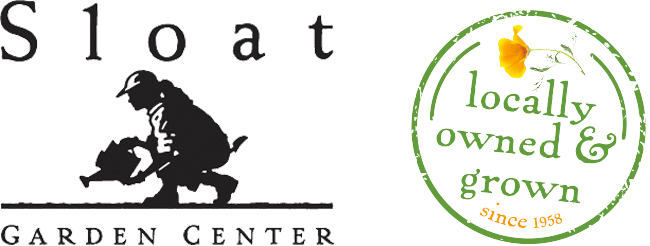Container gardening is the ideal solution for gardeners with limited space — you can grow vegetables and herbs in window boxes, hanging baskets, on balconies, patio, decks, and doorsteps. Containers can give you an instant garden without the labor of tilling and weeding. They are also portable, allowing you to move them around for aesthetic reasons or to ideal light conditions.
Technically, you could grow just about anything in a container, if it is large enough and kept moist, although dwarf or compact plants and plants with shallow roots are especially well suited. Some plants may need a little extra TLC to do well in containers if they require a lot of nutrients to complete their full life cycle, have an extensive root system, or are tall and can topple over easily in wind.
Container types – Avoid containers that are less than 6″ deep. They will dry out too fast and plants may become root bound if the container is too small. Types of containers include: terra cotta, glazed ceramic, plastic, foam (faux terra cotta/stone), wire or metal hanging baskets with sphagnum moss, and wood whiskey barrels (line with a plastic garbage bag with the bottom cut off to retain moisture if you are in a hot, dry climate).
Thinning – Following spacing recommendations on seed packets is CRITICAL when growing in containers. Since the roots are in a confined area, roots from multiple plants will compete with each other. If there is too much competition for moisture and nutrients, none will thrive and you will be disappointed with the results. (See the container plant list for some tips on how many plants can grow in a container.)
Drainage – Make sure your container has adequate drainage. It should have at least one drainage hole in the bottom. You can prevent soil from falling out by laying a small piece of screen, a coffee filter, or some rocks over the hole, but don’t completely plug the hole.
Sunlight – Most fruiting vegetables need a minimum of 6-8 hours of direct sunlight to thrive and produce well. Leafy greens and root vegetables can tolerate partial shade, requiring a minimum of 3-6 hours of direct sunlight or dappled sunlight for most of the day.
Soil – Most commercial potting soils are fine for containers, but consider amending them with 50% compost. Since potting soil is usually very lightweight and contains a lot of peat, vermiculite, or perlite that doesn’t retain moisture well, the additional organic matter in the compost will help your plantings stay moist for a longer period.
Watering – during the hottest part of summer, containers may need to be watered twice a day to keep from drying out. When vegetables dry out, they stop growing. A plant that has wilted may never fully recover. If you work during the day, water once in the morning and again when you get home during the hottest part of summer. Consider the convenience of using self-watering planters, especially if you are in a very hot, dry climate or will be leaving town for a few days.
Fertilizer – Use a balanced fertilizer at the manufacturer’s recommended application rate. You may need to fertilize more frequently, because nutrients are lost out of the bottom of the container with each watering.
Wind – If you live in a windy area, it’s very important to anchor your containers, especially if they are lightweight plastic or foam. Put them in a protected area or weigh down the bottom of the container with bricks or rocks. The taller the plants get and the dryer the soil, the more likely they are to blow away on a gusty day.
Variety choices – Compact plants and plants with shallow roots are most suited for containers. Pole varieties of beans or tomatoes will need some sort of support for climbing. You can attach a trellis or put these containers next to a fence.
New to container gardening?
If you are new to gardening and have never grown vegetables in containers before, we recommend starting with tomatoes and lettuce.
There is NOTHING in the grocery store comparable to the flavor of a homegrown tomato, and lettuce is so incredibly easy to grow, everyone should have at least one container of each at home!

